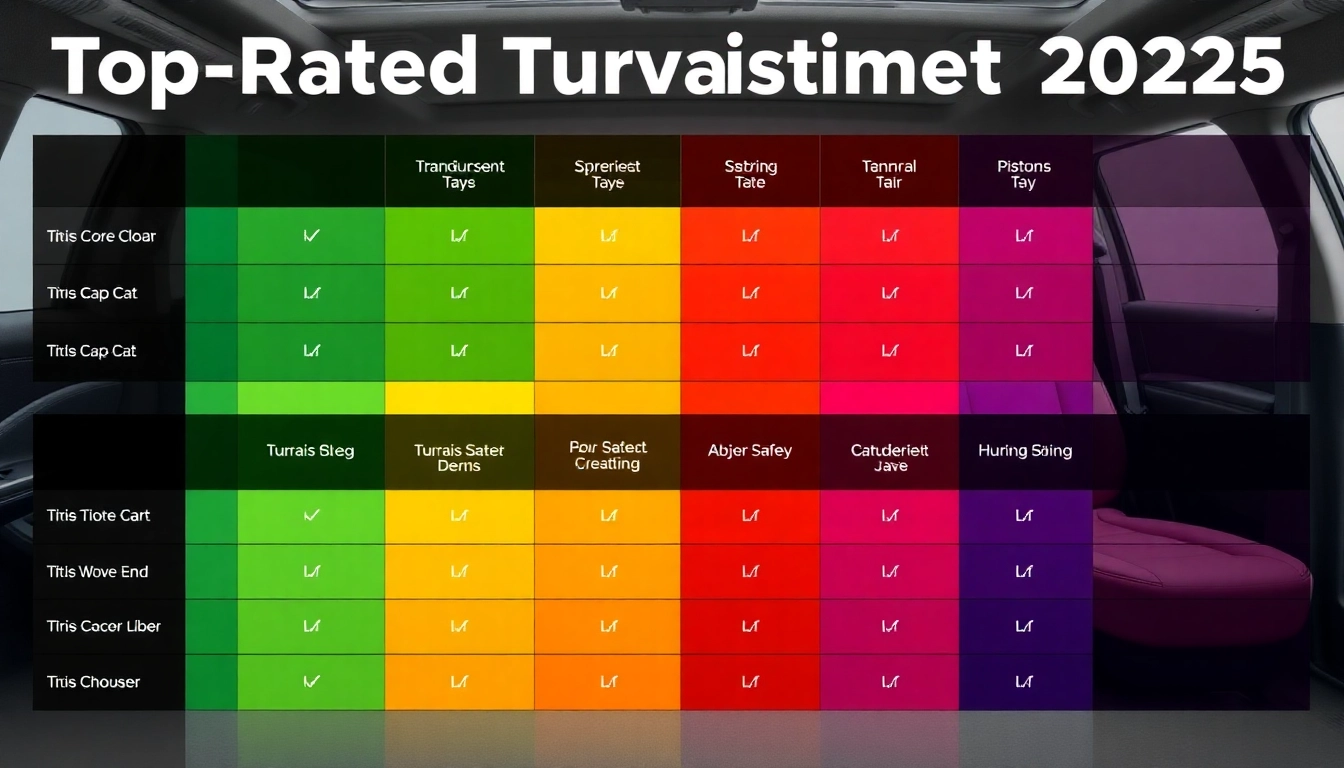Understanding the Importance of Truckers’ Reviews in the Industry
In the fast-paced world of trucking, where drivers spend countless hours on highways and byways, their firsthand experiences serve as vital feedback that shapes the future of rest stops, safety protocols, and industry standards. As professionals who navigate the complex logistics of our economy, truckers possess unique insights into the usability, safety, and comfort of the facilities they rely on daily. Platforms like truckers are essential hubs where drivers can share unfiltered opinions, fostering a community that promotes transparency, safety, and continuous industry improvement. Their reviews go beyond mere anecdotes; they influence real change, as industry stakeholders recognize the value of honest feedback to optimize services and regulatory policies.
The Role of Feedback in Improving Truck Stop Amenities
Truck stops are more than fueling stations—they’re vital rest, refueling, and social hubs for long-haul drivers. However, the quality and safety of these amenities vary significantly across regions and owners. Honest reviews from truckers shed light on these discrepancies, revealing issues like inadequate parking, unclean facilities, or long wait times that might otherwise go unnoticed by management. For example, a driver’s critique about insufficient shower availability at a major chain could prompt management to increase cleaning staff or expand shower stalls, directly improving daily driver experiences. Moreover, detailed feedback on amenities such as Wi-Fi reliability, food options, or laundry facilities aids operators in prioritizing upgrades where they are most needed.
Industry research underscores the critical link between driver satisfaction and overall operational safety. Drivers who are well-rested and comfortable are more alert and less prone to fatigue-related errors—a factor extensively documented in safety studies by the Federal Motor Carrier Safety Administration (FMCSA). By leveraging reviews, companies can implement targeted improvements, reducing accidents, complaints, and turnover rates.
How Reviews Impact Industry Standards and Driver Satisfaction
When truckers share their experiences openly, these reviews form a collective voice that influences broader industry standards. Consistent feedback reporting issues such as insufficient lighting, unsafe parking configurations, or poorly maintained restrooms can inform regulatory bodies and advocacy groups to advocate for stricter standards and regular inspections. Notably, the American Trucking Associations (ATA) actively incorporates driver feedback into policymaking, aiming to enhance working conditions, safety protocols, and infrastructure investments.
From an operator’s perspective, positive reviews can serve as marketing tools that attract new drivers by highlighting superior amenities and safety features. Conversely, negative feedback exposes systemic flaws, prompting companies to reassess their service priorities—ultimately elevating industry benchmarks. The impact of these reviews extends further, influencing vendor contracts, technology adoption, and even driver recruitment strategies, cultivating a competitive environment focused on quality improvements driven by driver insights.
Building a Community of Transparent Truckers Voices
Longevity in the trucking industry hinges on trust—trust between drivers, operators, and industry stakeholders. Creating a transparent community where truckers feel empowered to share candid reviews nurtures accountability and drives collective progress. Online forums like r/Truckers on Reddit, trucking-specific platforms such as TruckersReport.com, and dedicated review sites like TruckerReview.com are pivotal in establishing this environment. Sharing experiences regarding parking issues at a specific truck stop in Missouri or feedback about the cleanliness of restrooms at a Georgia service plaza collectively pushes the industry toward higher standards.
A vibrant community not only discusses amenities but also challenges industry norms—advocating for better working conditions, fair wages, and safety regulations. Such collective voices have historically prompted significant industry changes, including updates to Hours of Service regulations or the deployment of smart parking technologies. These communities foster peer-to-peer support, where drivers exchange tips for the best rest stops, discuss recent industry news, and advocate for policies that prioritize driver wellbeing.
Key Factors Truckers Consider When Reviewing Rest Stops
Fuel Availability and Pricing Strategies for Truckers
Fuel is the primary reason for many pit stops, making the availability and cost of fuel a crucial review component. Drivers seek truck stops with ample fueling islands, minimal wait times, and competitive prices—especially those participating in loyalty programs like Pilot Rewards, which provide discounts and cashback options. Consistent feedback about fuel price trends can influence chain decisions, such as expanding fuel options or adjusting pricing policies during peak travel seasons.
Parking Ease, Security, and Accessibility Challenges
Parking is often cited as the most significant pain point for truckers. Reviews frequently mention the size, security measures, lighting, and ease of access to parking spots. Strategic insights help both drivers and operators identify locations that offer safe, secure, and sufficient parking, especially during peak hours or adverse weather conditions. Emerging technologies such as smart parking systems and real-time occupancy tracking are often driven by driver feedback, aiming to alleviate congestion and improve safety.
Quality of Food, Cleanliness, and Comfort Facilities
Rest stops must replenish both fuel tanks and driver morale. Clean, well-maintained restrooms, shower facilities, and quality food options significantly affect driver comfort. Reviews often rate cleanliness and the availability of healthy dining options. Feedback about delays in cleaning or limited healthy menu choices prompts operators to enhance sanitation protocols and diversify restaurant offerings. The inclusion of hot meals, vending, and snack options that cater to diverse preferences further elevates driver satisfaction.
Utilizing Reviews to Enhance Your Over-the-Road Experience
Maximizing Amenities Through Community Insights
By reviewing and reading reviews, truckers can strategically plan their routes to prioritize stops with superior amenities. For example, driver communities often share insights about the best times to arrive at busy locations to secure parking or get a shower without long waits. Some platforms provide filters to find rest stops that meet specific needs—such as those with free Wi-Fi, laundry facilities, or 24-hour dining. This proactive approach minimizes downtime and enhances overall well-being.
Identifying the Best Stops for Quick Rest and Longer Refuels
Experience-based reviews help drivers distinguish between quick refueling stops and those suitable for longer breaks. For instance, a truck stop with fast fueling, clean restrooms, but limited food options might be ideal for a quick top-up, while stops with comfortable lounges and good food become preferred for overnight stays. Mapping these preferences enhances route efficiency, reduces stress, and ensures drivers arrive at destinations fully rested.
Sharing Your Own Feedback to Improve Industry Standards
Empowered by the knowledge that their reviews influence change, truckers are encouraged to contribute regularly. Honest, detailed feedback about facilities, safety, and service quality enables operators to make targeted improvements, fostering a cycle of continuous enhancement. Writing constructive reviews—highlighting positives and pinpointing issues—serves as a vital feedback loop, strengthening the community and catalyzing progress at individual rest stops and across the trucking industry.
Emerging Trends and Technologies in Truck Stops Driven by Truckers’ Feedback
Smart Parking Solutions and Digital Reviews Platforms
The integration of IoT and real-time data platforms is revolutionizing parking management. Many truck stops now offer apps displaying current parking availability, reducing circling time and congestion. These innovations are directly driven by driver reviews emphasizing the need for transparency and efficiency. Digital review platforms enable drivers to report issues instantly, fostering a responsive environment where management can quickly address challenges.
Innovations in Restroom and Shower Facilities Based on Driver Input
Feedback has led to advancements like touchless fixtures, improved ventilation, and scheduled cleaning routines that keep facilities hygienic. Some locations incorporate UV sterilization or antibacterial materials based on driver recommendations, ensuring safer environments amidst ongoing health concerns.
Enhanced Safety and Convenience Features from Community Suggestions
Drivers frequently request enhanced safety features such as better lighting, security cameras, and clearer signage. These suggestions have led to the adoption of comprehensive surveillance systems and well-lit pathways, significantly reducing incidents of theft or assault. Additionally, innovations like contactless payment systems and mobile ordering further elevate convenience, responding directly to driver feedback.
Getting Involved: How Truckers Can Voice Their Experiences Effectively
Creating Impactful and Honest Reviews on Platforms Like TruckerReview.com
To maximize influence, truckers should craft comprehensive, specific, and constructive reviews. Highlight key aspects such as cleanliness, safety, amenities, parking, and staff friendliness. Including detailed descriptions and suggestions for improvement increases the credibility and usefulness of reviews. Visual evidence through photos or videos enhances the impact, and consistent participation helps build a reputation within the community.
Engaging with Industry Bodies and Advocacy Groups
Beyond online reviews, engaging with organizations like the American Trucking Associations or local driver advocacy groups amplifies driver voices. Participating in surveys, attending town hall meetings, or joining initiatives that focus on infrastructure and safety initiatives ensure that the collective driver voice influences legislation and industry standards.
Sharing Stories to Advocate for Better Working Conditions and Amenities
Personal stories highlighting critical issues—such as safety concerns, unfair labor practices, or facility deficiencies—resonate powerfully with policymakers and industry leaders. Blog posts, videos, or social media campaigns can spotlight these issues, rallying support and prompting substantive change. As the industry evolves, consistent storytelling ensures that drivers’ needs remain central to development plans.


